Blue OLEDs
There are two general types of OLED emitting materials, fluorescent and phosphorescent, and while those terms both encompass light-emitting materials, they are quite different. While both materials generate light when electrically stimulated fluorescent materials generate light in a ‘singlet state’ while phosphorescent OLED materials generate light in a ‘triplet state’, and before you fall back into the glaze of Chemistry 101, the simplified explanation of what that means is phosphorescent OLED materials can emit close to 100% of the light generated, while fluorescent OLED materials can emit ~25%. Given that the objective of all displays is to generate the most amount of light with the least amount of power, phosphorescent OLED materials are preferred, however there is a catch.
Red and green phosphorescent OLED materials are commonly used in RGB displays, however blue phosphorescent OLED materials tend to be unstable and have lifetimes that are shorter than necessary for most displays, so OLED display producers have been forced to use blue fluorescent OLED materials to fill the gap in RGB displays. This means that the blue layer would be producing les light than its red and green phosphorescent counterparts, so OLED display designers double or triple the blue layer to balance the system. While that works from a visual point-of-view, it requires considerably more power and is therefore an inefficient device, and many companies are working toward finding a stable phosphorescent blue OLED material to eliminate that inefficiency.
While we have read through literally hundreds of papers and IP filings that are looking for solutions to the phosphorescent blue issue, no commercial blue phosphorescent OLED emitter material has appeared in the market. Universal Display (OLED), the holder of the IP for heavy metal red and green phosphorescent OLED emitter material, which it exclusively supplies to all OLED display manufacturers, has one of the largest blue phosphorescent material R&D programs and has stated that they expect to have a commercial blue phosphorescent OLED emitter available in 2024 while others have stated earlier goals, many of which have passed without success. A recent article in the South Korean press indicated that Samsung Display itself was doing research toward the development of a blue phosphorescent OLED emitter which would allow the company to replace the three layers of blue fluorescent emitter material in its QD/OLED stack with one blue phosphorescent blue layer, reducing power requirements and simplifying the deposition process, but thus far we do not believe that has occurred.
More likely would be a collaborative effort between Samsung Display and UDC toward such a product, with SDC sharing the material science behind their blue material, which is based on a platinum/carbene combination, and UDC extending the characteristics of the material to reach commercial specifications. The SDC material has a LT70 lifetime[1] of 1,113 hours at 1,000 nits, which would be about the peak brightness of an iPhone 13 Pro Max, and the LT70 degradation would occur in roughly a year, but the press note suggests that SDC’s research has progressed considerably since the paper was written, with ‘visible results’ expected by SDC within a year from the original writing (~15 months ago).
Much of the article was speculation concerning SDC’s internal development efforts toward developing a blue phosphorescent emitter but the paper on which that speculation is based noted that the materials being developed were reactive to host materials commonly used and further development of those host materials would be necessary to take advantage of the newly developed blue phosphorescent emitter materials. This leads us to believe that a commercial blue phosphorescent emitter system is still a further away than the press article might suggest. All in, we expect all major OLED display producers are doing at least some research toward the development of a stable blue phosphorescent OLED emitter, likely in conjunction with UDC or other OLED materials suppliers. While progress is certainly being made in the development of such a material, the fact that new research has been published could move development forward but is only a gateway to the commercial development and production of a new material. We keep our expectations low as many promises have been made in the past and the development of blue LEDs was far more challenging and time-consuming than its red and green cousins, so we know it will eventually be done but take all timeline assumptions with a grain of salt..
[1] LT70 means the length of time it takes for the material to lose 30% of its light output.









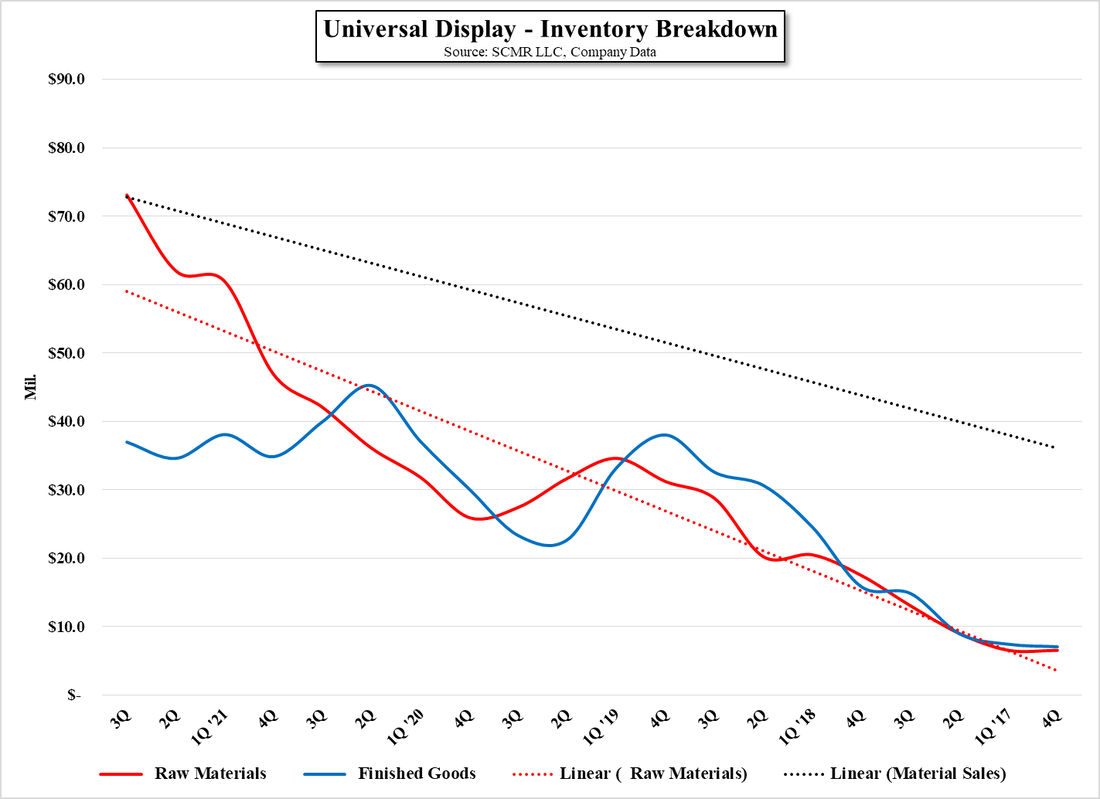
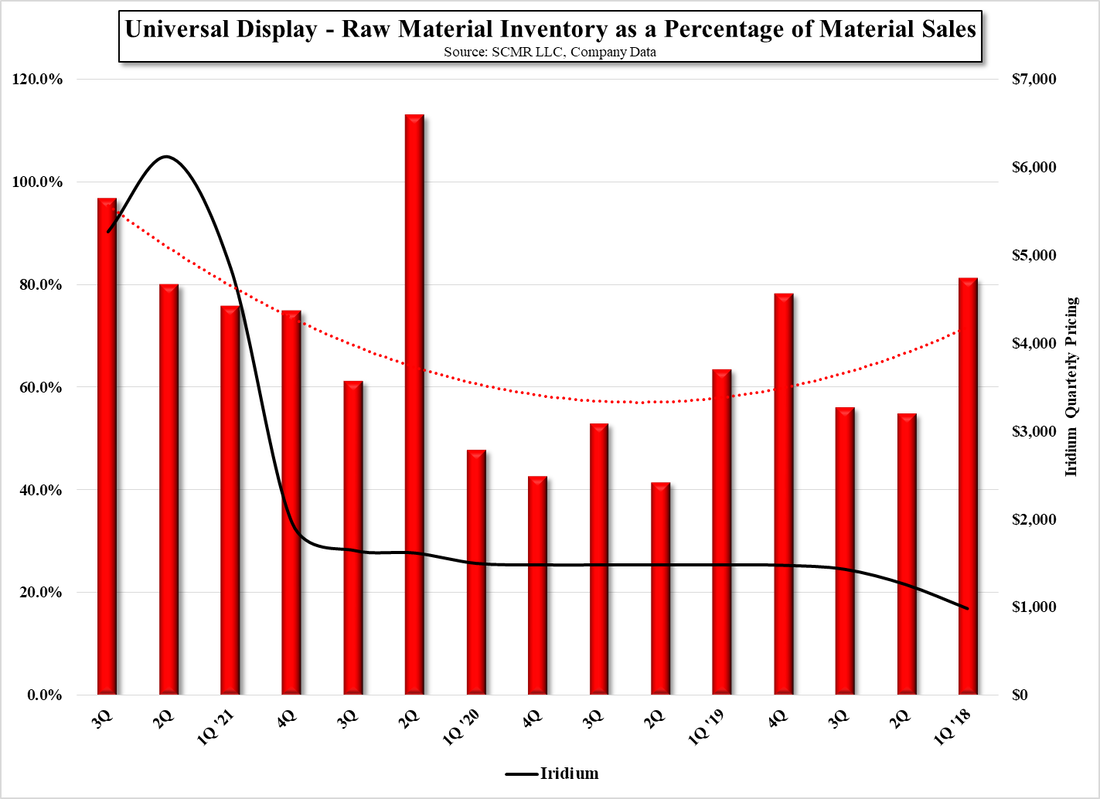
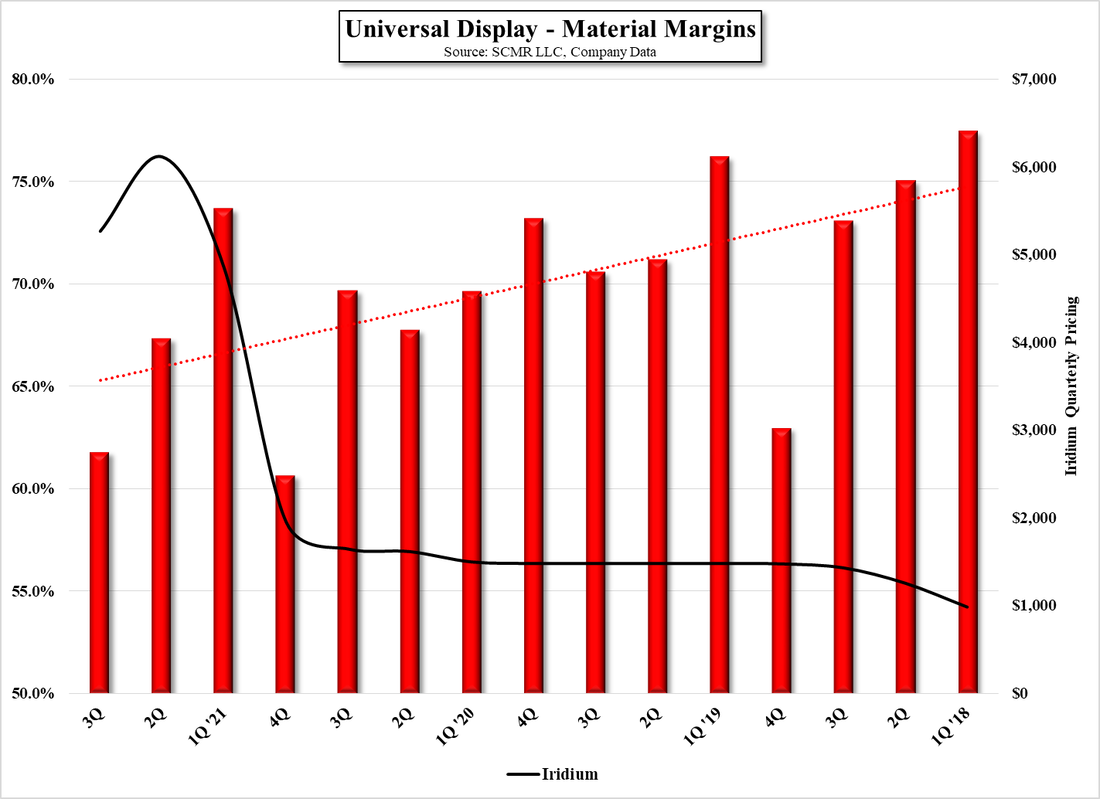

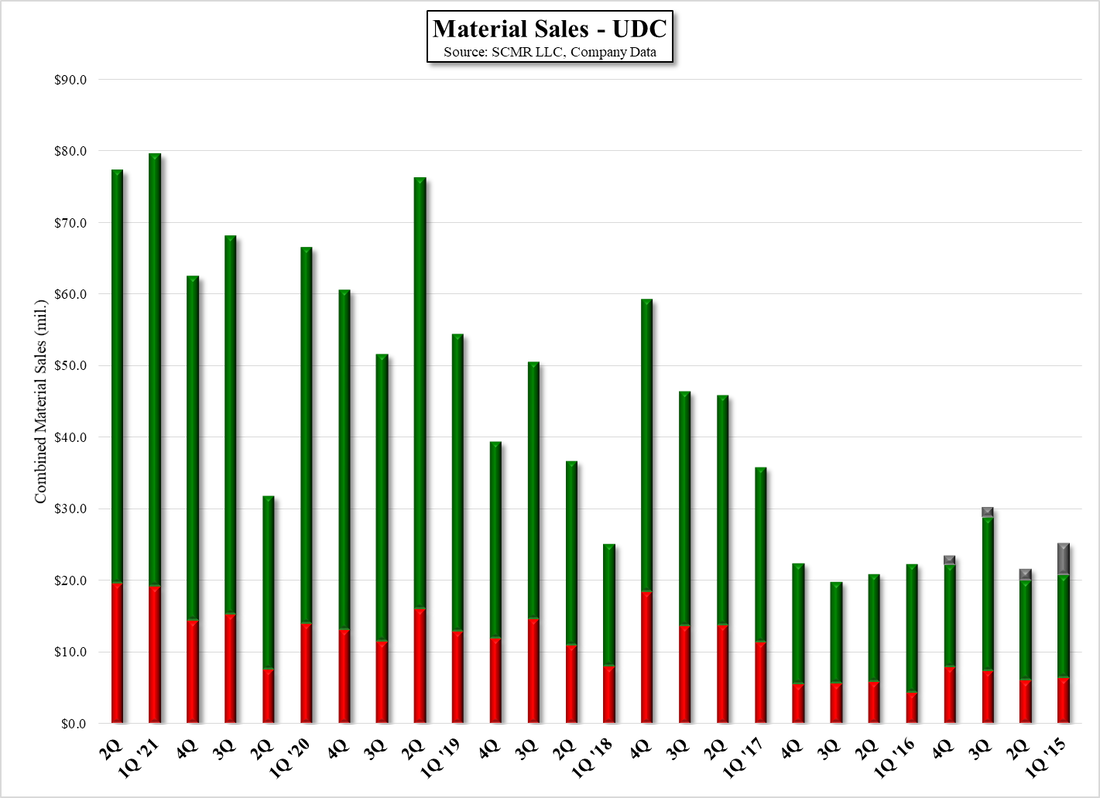
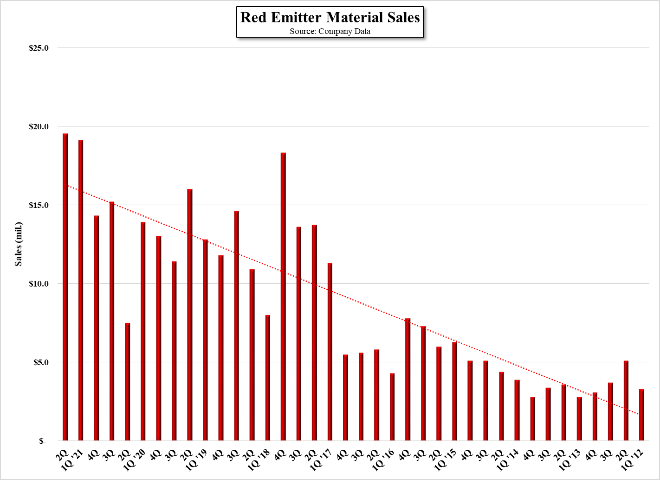
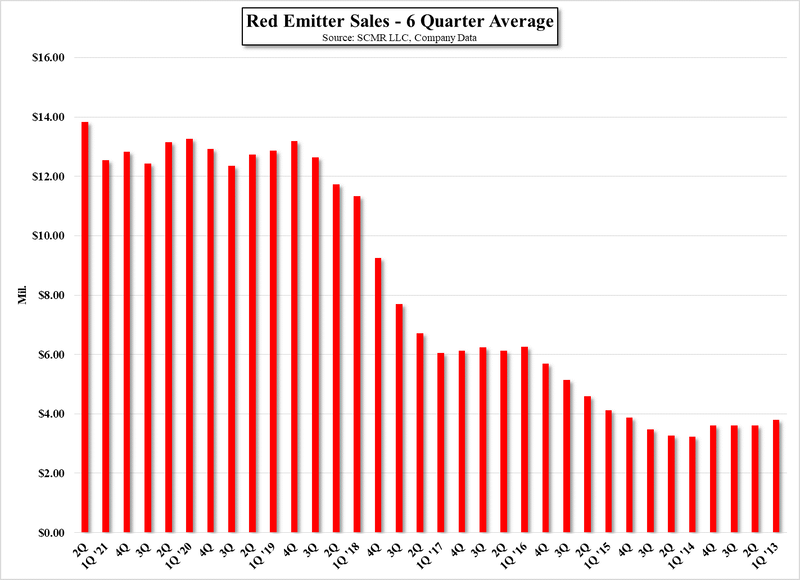
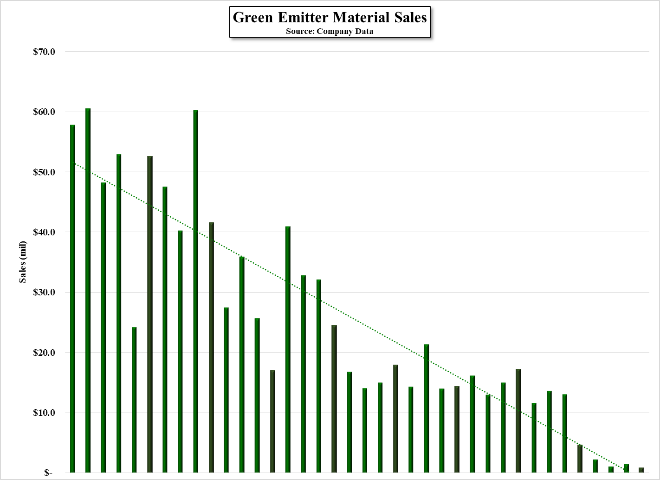
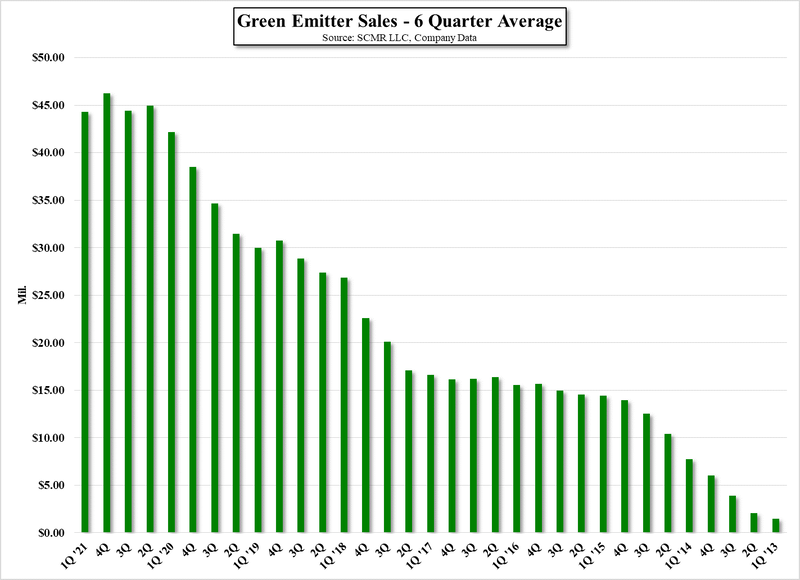

 RSS Feed
RSS Feed